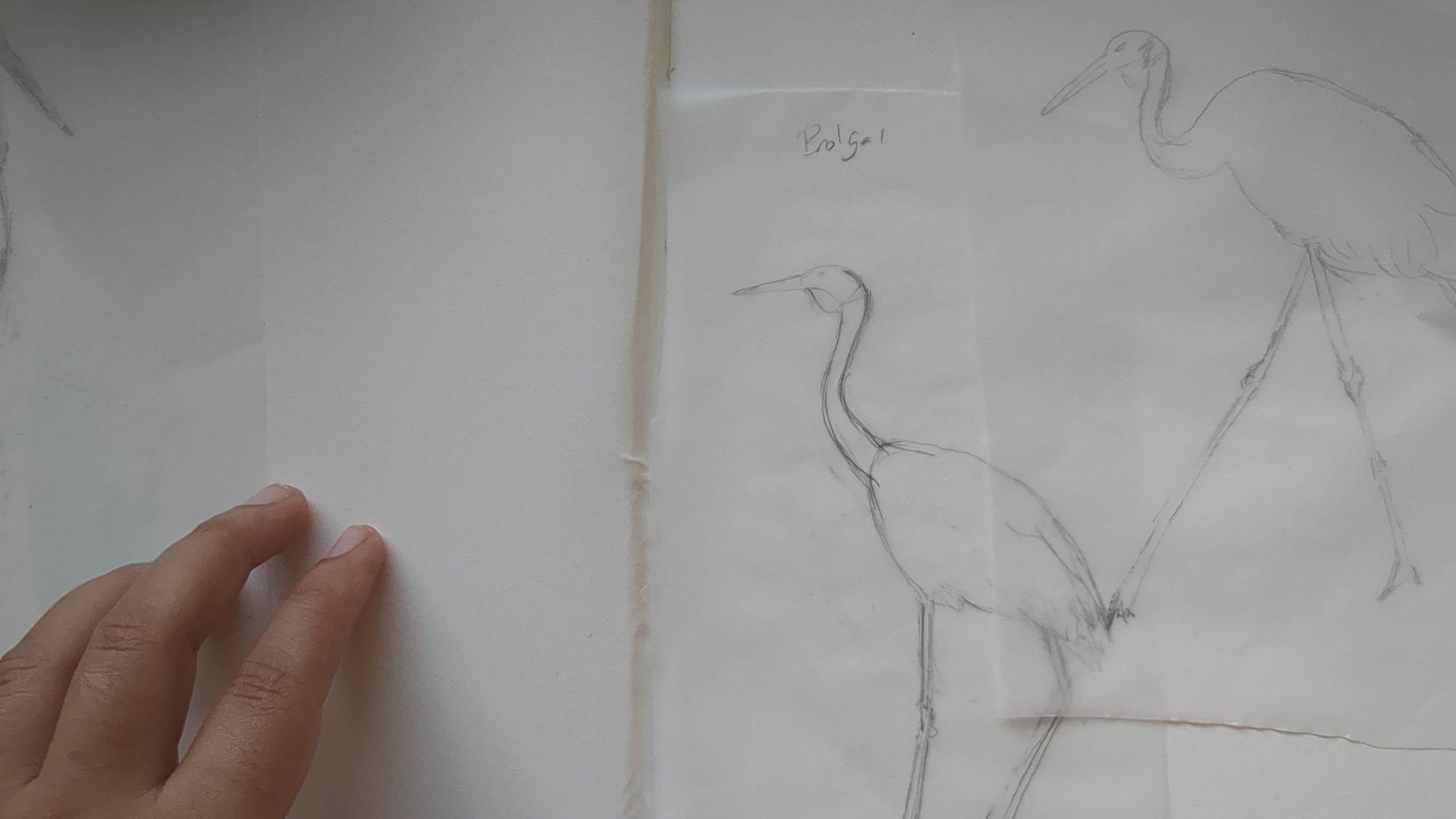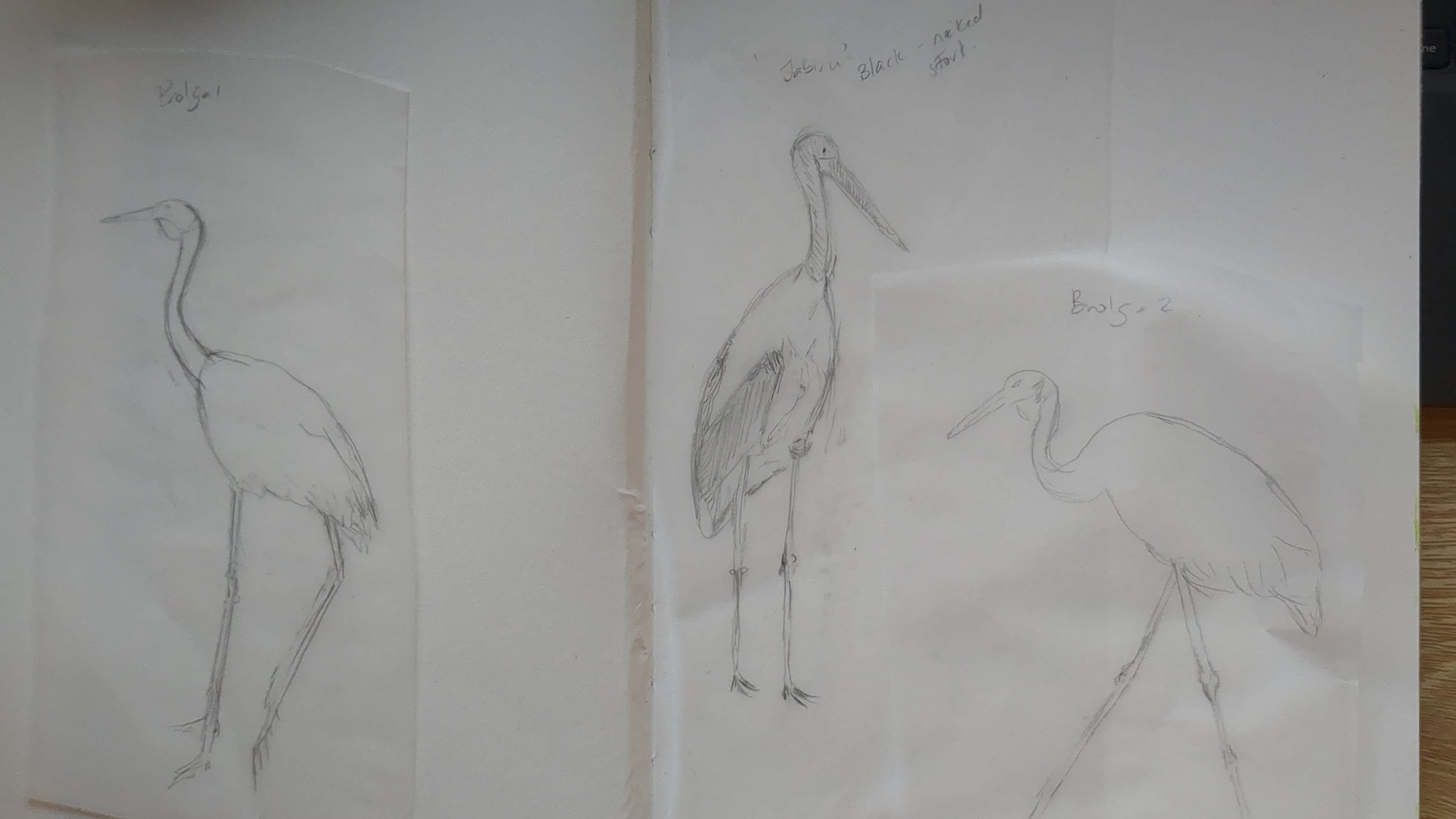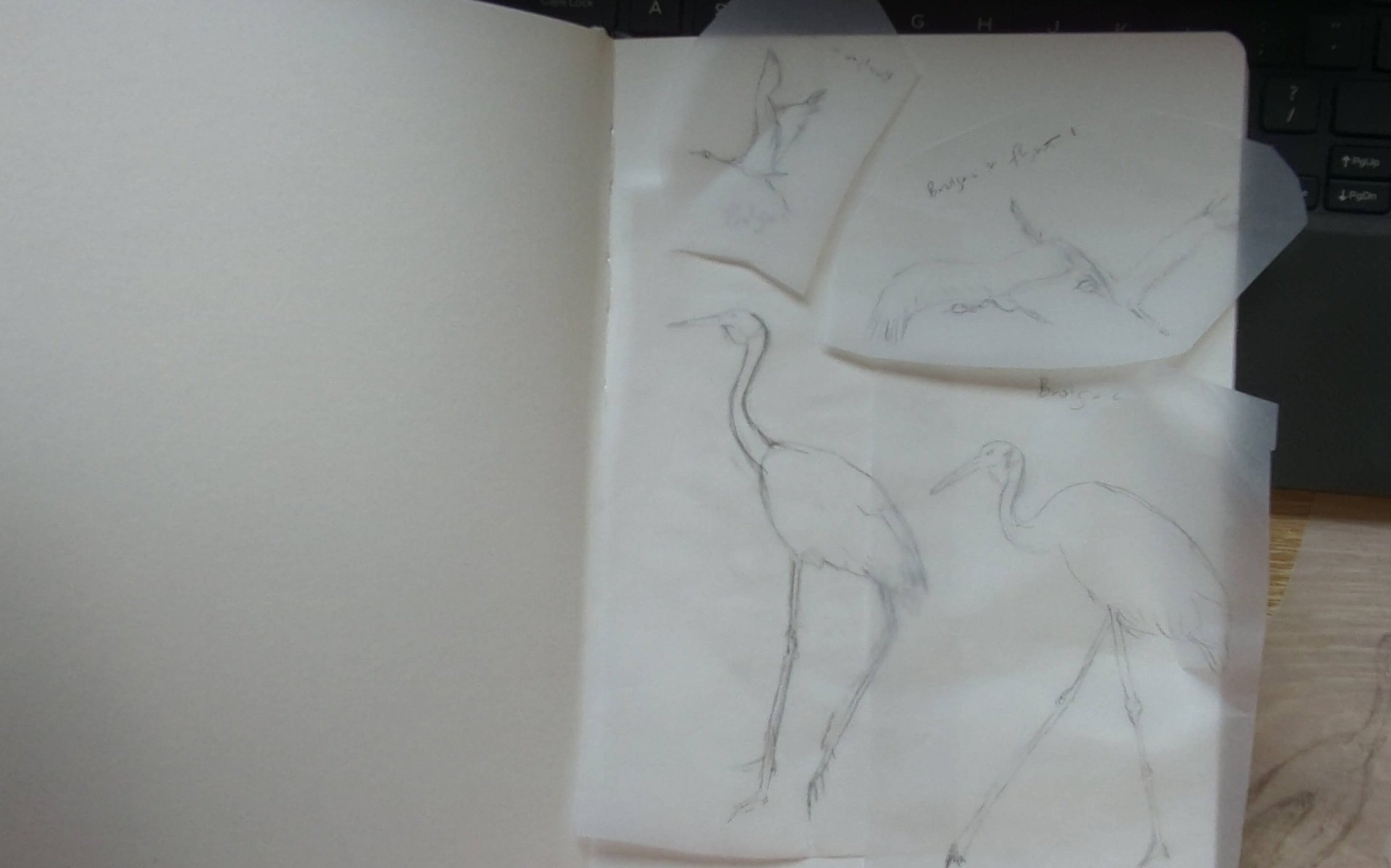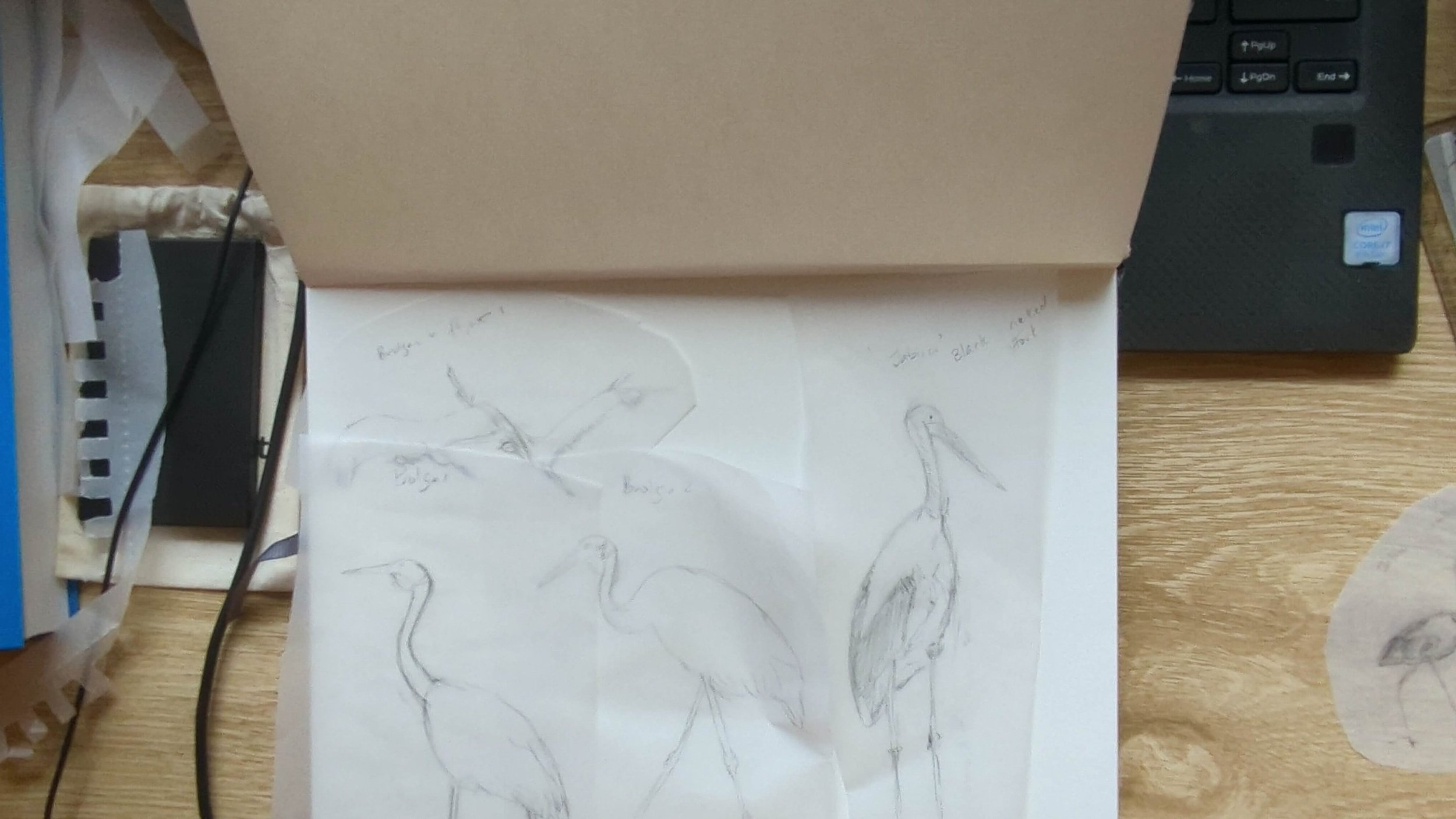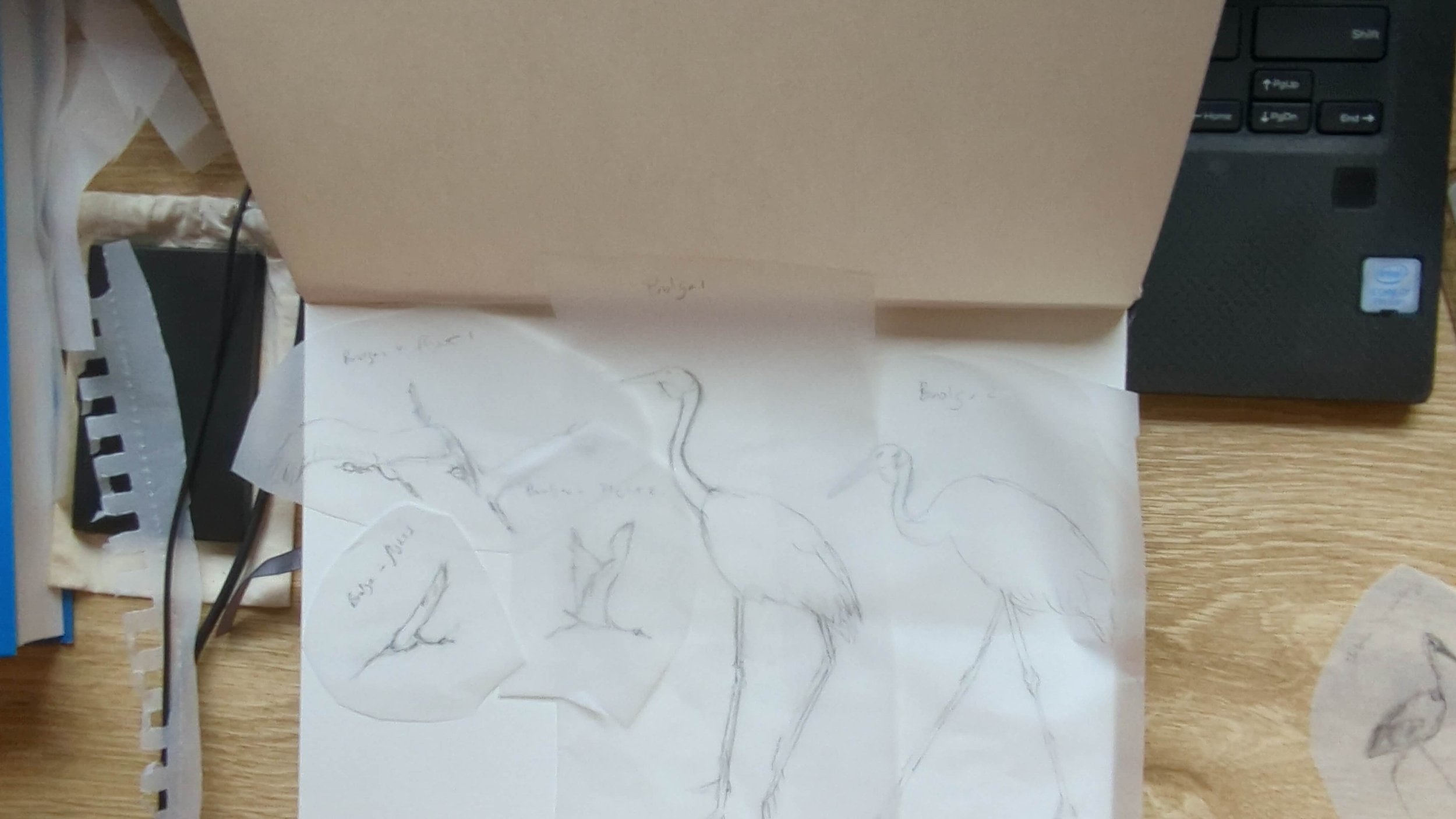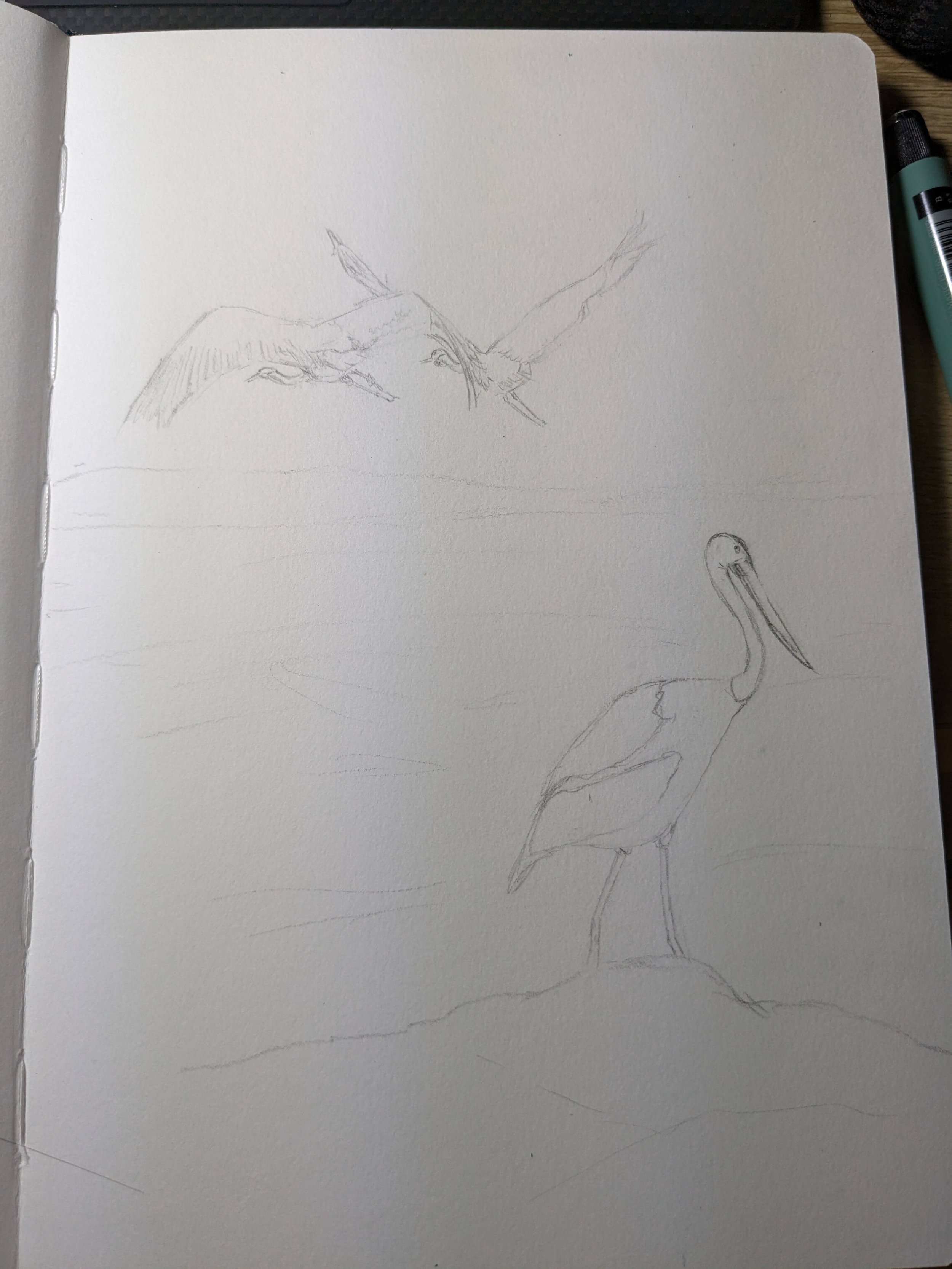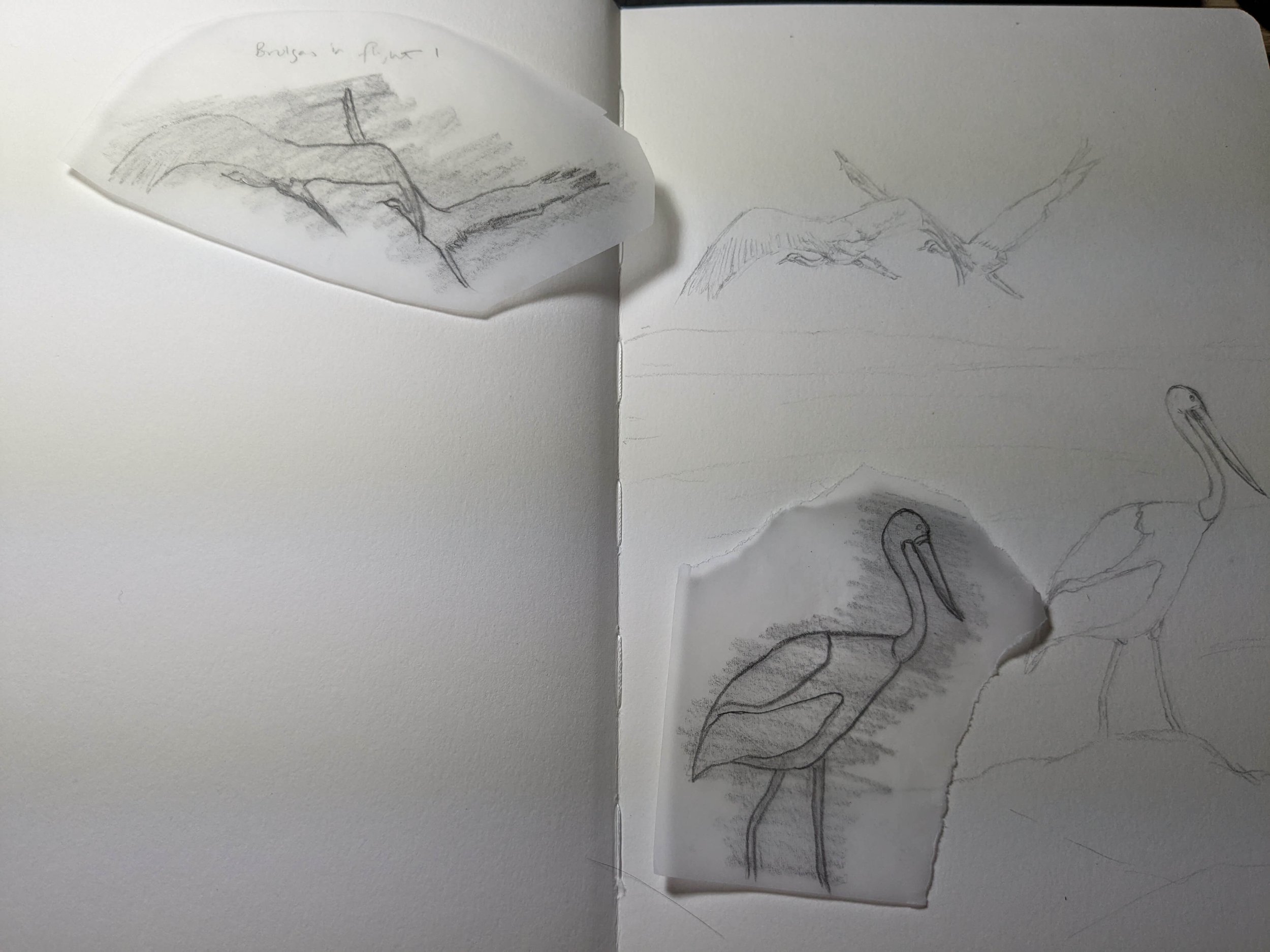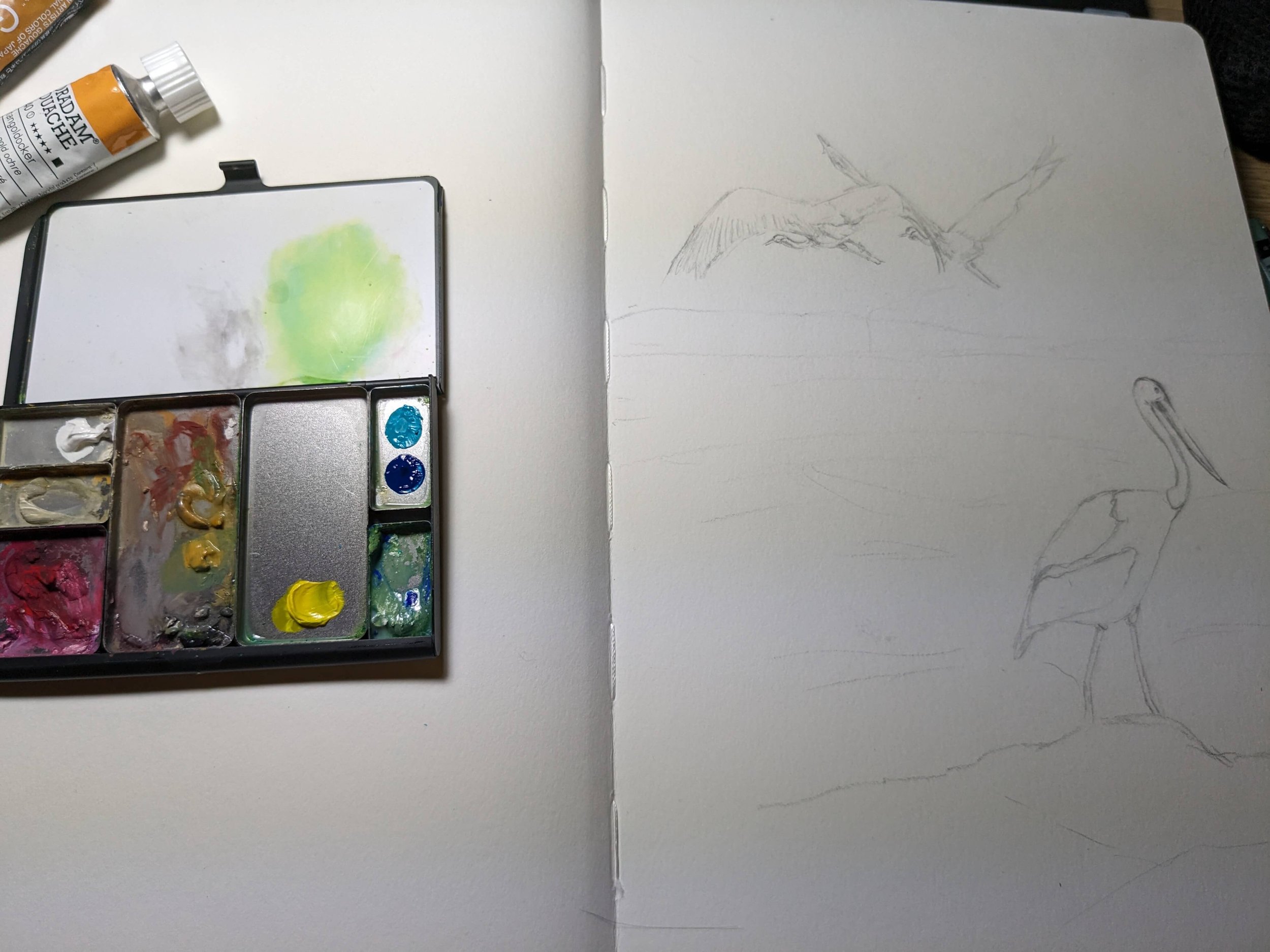Painting Brolgas and a Black-necked Stork (Alphabet Superset Project Part 2)
Part 2: B - Brolga and Black-necked Stork (aka Jabiru in Australia)
Until April 2024, hopefully I’ll paint 26 paintings of Australian animals (or ones that visit) that I’ve seen as part of the Alphabet Superset challenge/project. If you’d like to know more about that, and why I’ve decided to take on this challenge for myself, check out the first post in this series and/or the Alphabet Superset challenge page itself.
Week 2, or B week was one I was particularly looking forward to - painting Brolga and a Black-necked Stork finally!
What are Brolgas? What are Black-necked Storks?
Brolgas (Grus rubicunda) are a species of crane (family Gruidae), and Black-necked Storks (Ephippiorhynchus asiaticus) are a species of stork (family Cioniidae). Both are stunning, majestic creatures that we were so lucky to see both a few times while we were camping and travelling in the Northern Territory and the Northwest.
Brolgas are tall, pale grey and adults have a red/reddish-orange band on their heads with a gap around the ears. In flight, you just see a little patch of on their heads as I’ve depicted but it is actually a band from beak that goes around their head with the crown remaining pale grey. They are generally seen in pairs or small family groups around, and when we saw them it was always at or near billabongs.
Adult Black-necked Storks are mostly black and white. Black head and neck, large black bill, black wings and tail with the rest of their body white. They also have distinctive orangey red legs. The adult females have yellow eyes while the males have darker brown eyes. We’ve been lucky enough to see adults of both sexes and juveniles. Their Black feathers are a stunning iridescent black. When we’ve seen them, they’ve generally been alone, although in one instance in Kakadu we did see a juvenile and an adult nearby.
References I used For more information on these awesome birds, check out:
The Australian Bird Guide, 2019 revised edition, CSIRO Publishing (click here for my blog post about the bird guide)
Why Paint them?
Like many of the animals I’ll be painting as part of this project, I’ve been meaning to paint these two birds for a long time. Since we first saw them in early 2022 in fact! I just never got around to it, with other things to paint and do. So, this project is a chance to actually put in the brush miles, and get them down on paper, and in this case to hopefully capture some of the beauty of the places in which we saw them.
Also, they’re both such beautiful birds! I know, I know, I’m repeating myself but they really are. The Brolga’s with their red caps and interesting heads, the Black-necked Stork with their bright orangey-red legs and stark black and white bodies. Both are beautiful to watch in flight too, and while we were spoilt for choice in the sheer number of birds we were seeing up in the billabongs of Northern Territory and the eastern Kimberley, it was always really special when we saw Brolgas or Black-necked Storks. I have so many lovely memories of sitting by a billabong, at wetlands or other waterholes and seeing one of these majestic birds fly in. Some of my favourite memories of our many months camping are of Fogg Dam Conservation Reserve, Anbangbang Billabong and Yellow Water in the Northern Territory, as well as Parry Creek in Western Australia.
The first time we saw the Black-necked Stork/Jabiru was at Fogg Dam Conservation Reserve. I was so excited I had to get the Bird Book out to see if it actually was what we were seeing. The second time we went to Fogg Dam Conservation Reserve, we saw Brolgas. As an aside, Fogg Dam Conservation Reserve is a gem of a place for spotting literally hundreds of birds, and it was only 45 mins or so out of Darwin.
Info about Fogg Dam Conservation Reserve can be found here: Fogg Dam Conservation Reserve | NT.GOV.AU
Process - Part 1: Find Photo References, Sketch
Thankfully unlike the Agile Wallabies, I actually had some good photos to choose from even if the quality wasn’t the best when zoomed in. The photo of the Brolgas flying away in particular was a gem and I’d been hankering to paint those birds in flight ever since I saw it.
Similarly to last time, I used Margot Hallac’s awesome tip/advice and I cannot believe that I didn’t think about it sooner, and don’t think I’ll ever paint without this technique again (or perhaps doing something similar on digital software).
I tried a few different compositions and decided to paint more of a scene than last week, so I could show and capture the mood of the places we’d seen them, and so that I could paint the birds in flight. It took a while, but I got a composition I was fairly happy with and that was manageable in the time I had in the end.
Process - Part 2: Work out colours, paint the background
This was fairly straightforward though there were a lot more colours to work out. I ended up choosing to go with:
Main Colours:
Primary White (Holbein)
Primary Cyan (Holbein)
Primary Yellow (Holbein)
Accents, Birds
Vermillion Hue (Schmincke Horadam Gouache)
Bengara/Iron Oxide Red (Holbein Irodori Artists’ Gouache)
Susutake/Smoked Bamboo (Holbein (Irodori Artists’ Gouache)
Titanium Gold Ochre (Schmincke Horadam Gouache)
Oudo/Light Ochre (Holbein Irodori Artists’ Gouache)
Gunjou/Ultramarine (Holbein Irodori Artists’ Gouache)
Primary Black (Holbein Artists’ Gouache)
Sky - Primary White mixed with Primary Cyan for the sky (a lot of white).
Grass - Primary Yellow and Primary Cyan
Marshy Lake - Ultramarine and Primary Cyan mixed with white
Process - Part 3: Paint Brolgas and Black-necked Stork
Unlike last week, this part was fairly easy. I mostly used a combination of Primary Black and Primary White for the Brolgas, with a hint of Vermillion Hue on their heads.
For the Black-necked stork, I used Primary White and Primary Black. However I mixed Primary Cyan mixed with Primary Black for the head portion to get the iridescent blue feathers the Black-necked storks have, and Primary Black with Vermillion Hue and Iron Oxide Red to have a slightly warmer shift to the Black on the wings. Finally, I used a mix of Vermillion Hue for the Black-necked Stork’s head.
Process - Part 4: Refine, refine, refine
The process of refining always takes the longest time! It took just as long to put the final touches, add more grass and marsh just to make the painting look closer to something I liked than it took to block in the bigger shapes and get the birds painted! Luckily, I have a lot of fun adding in little blades of grass and detail.
The grasses are starting to come in.
Almost there, but not quite. Still a lot of refining to go in the foreground.
Anndd, its done!
Overall, I’m pretty pleased with the piece. I am glad I finished it within the week and I am looking forward to next week’s painting.
Next week: C - (Juvenile) Channel-Billed Cuckoo
I was originally going to do Comb-crested Jacana, but I’ve decided to push that to J-week given I’ve brought the Black-necked Stork (aka Jabiru) up to this week. So, a spot opened up in C-week and while there are so many options (not least being a whole lot of cockatoos), I’ve settled on a juvenile Channel-Billed Cuckoo we saw in Kakadu.


